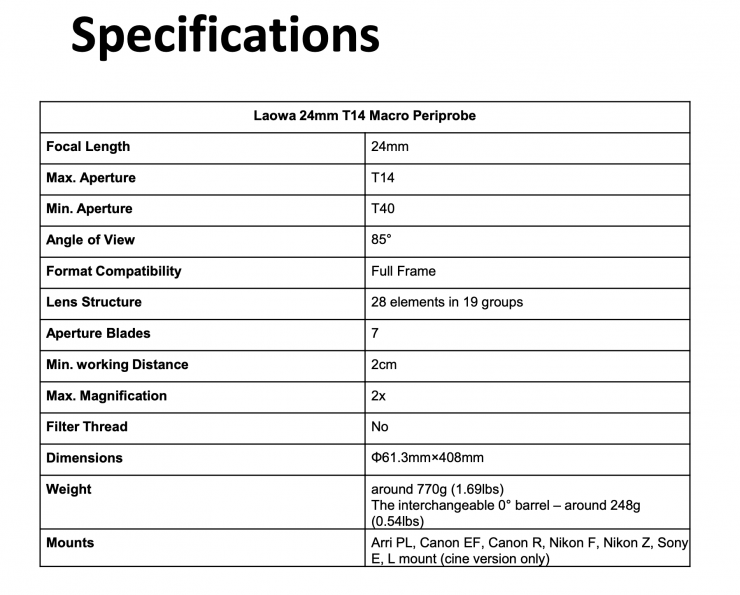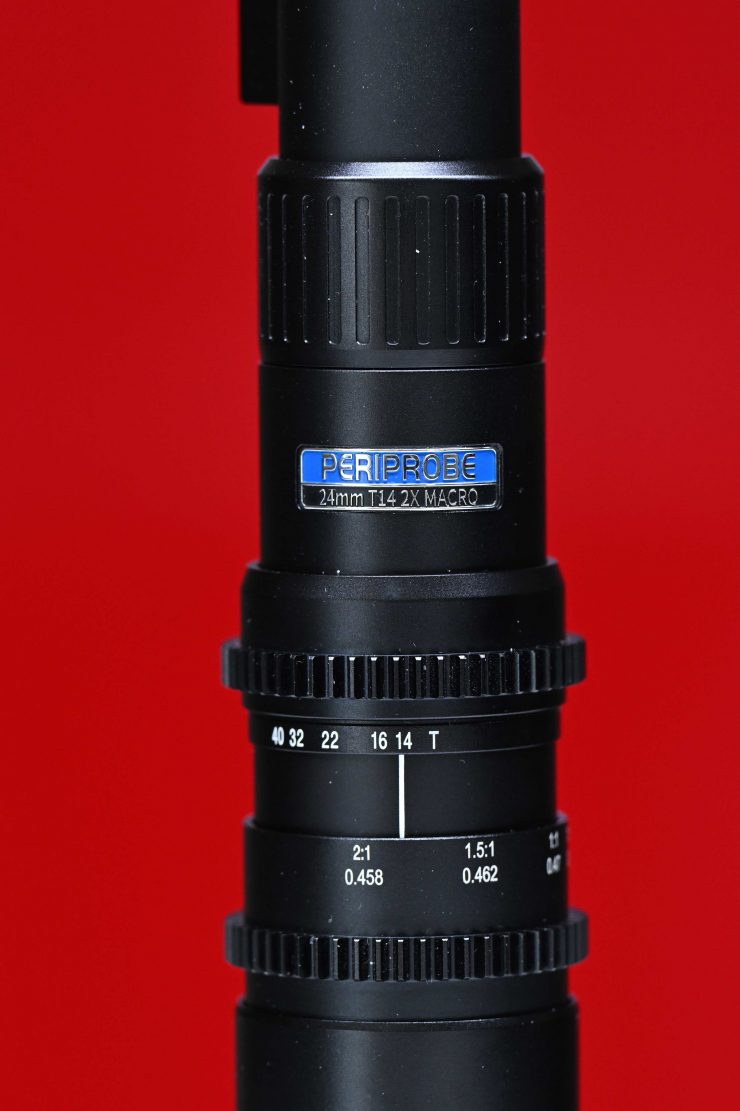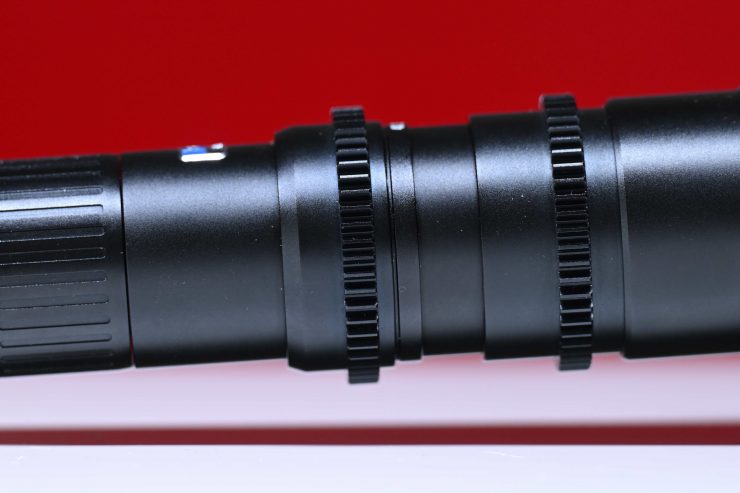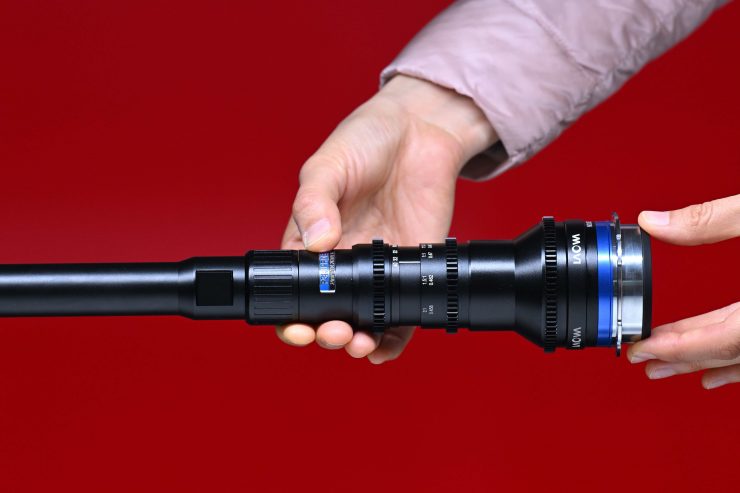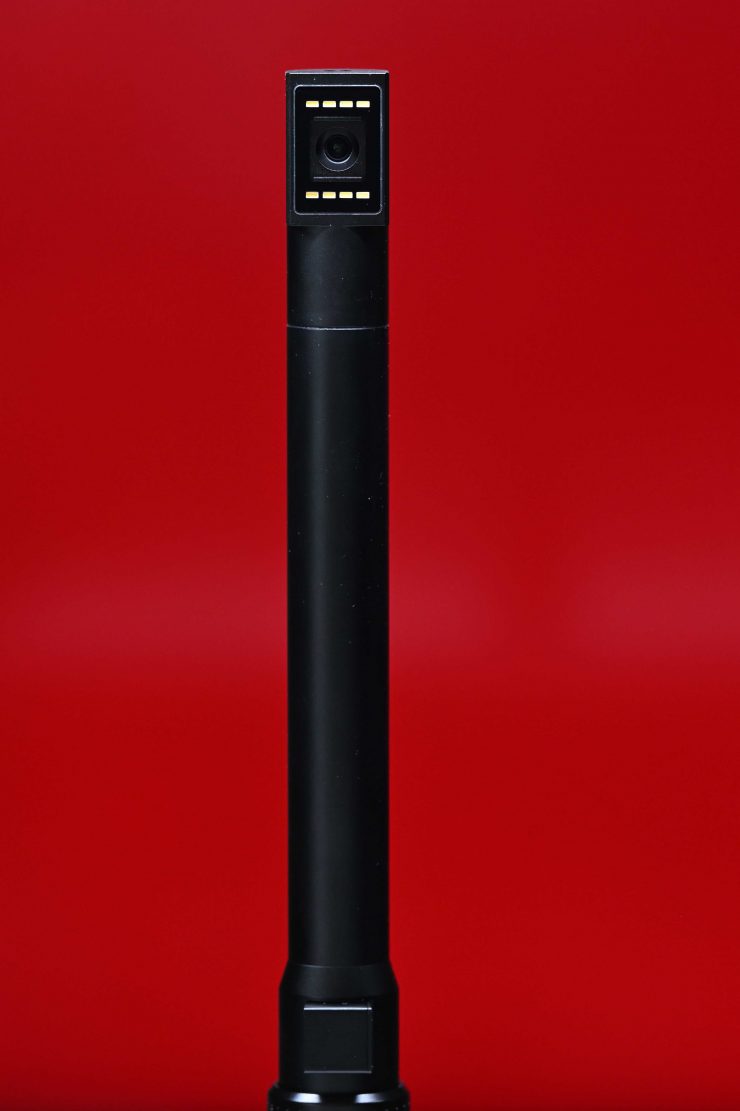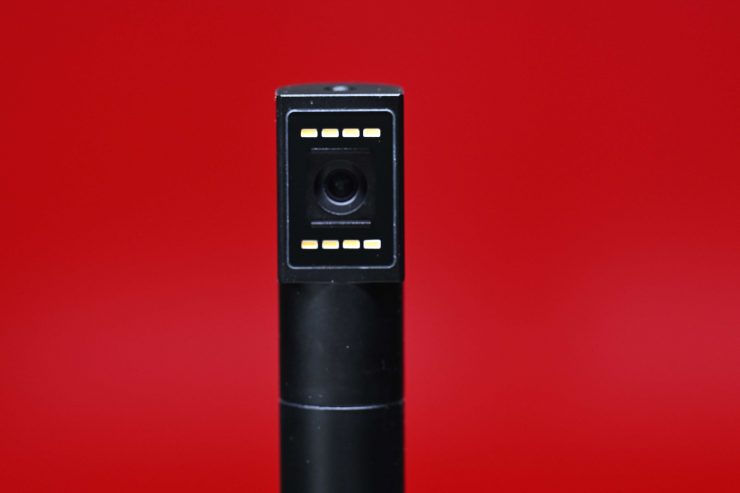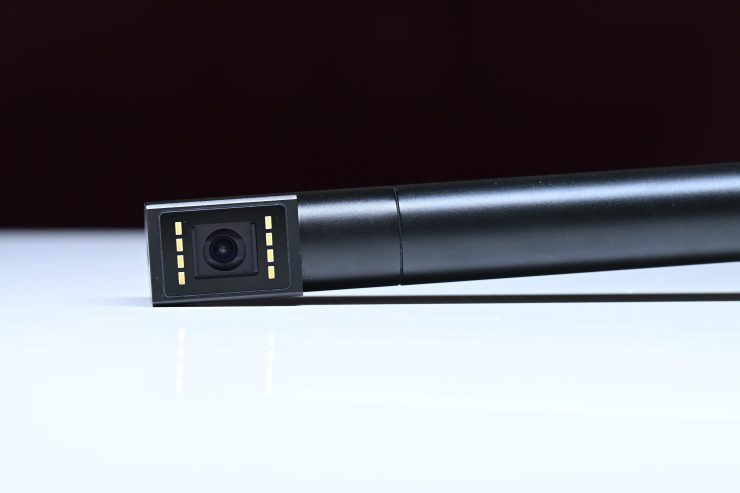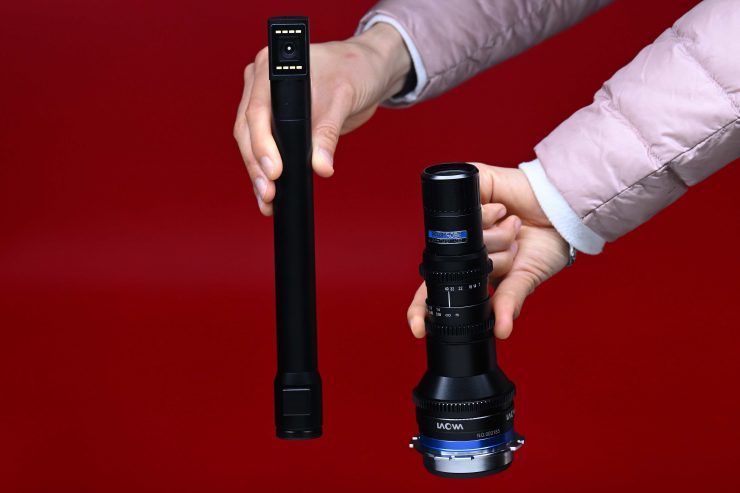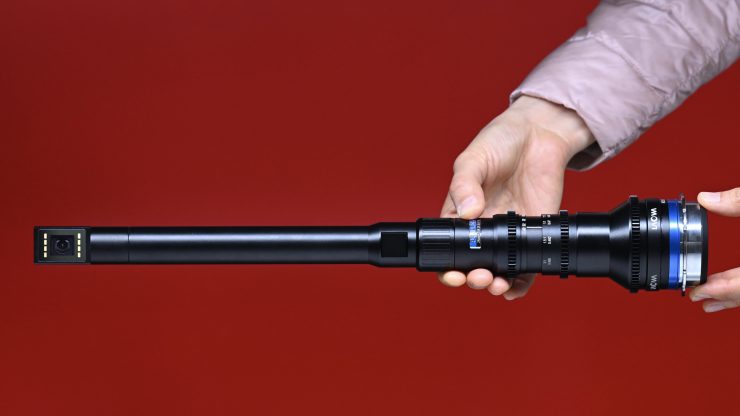
About 3 years ago Laowa announced the 24mm f/14 2x Macro Probe which was the first truly affordable lens of its type. Well, today they have released a follow-up to that lens, the FF 24mm T14 2X Macro Periprobe.
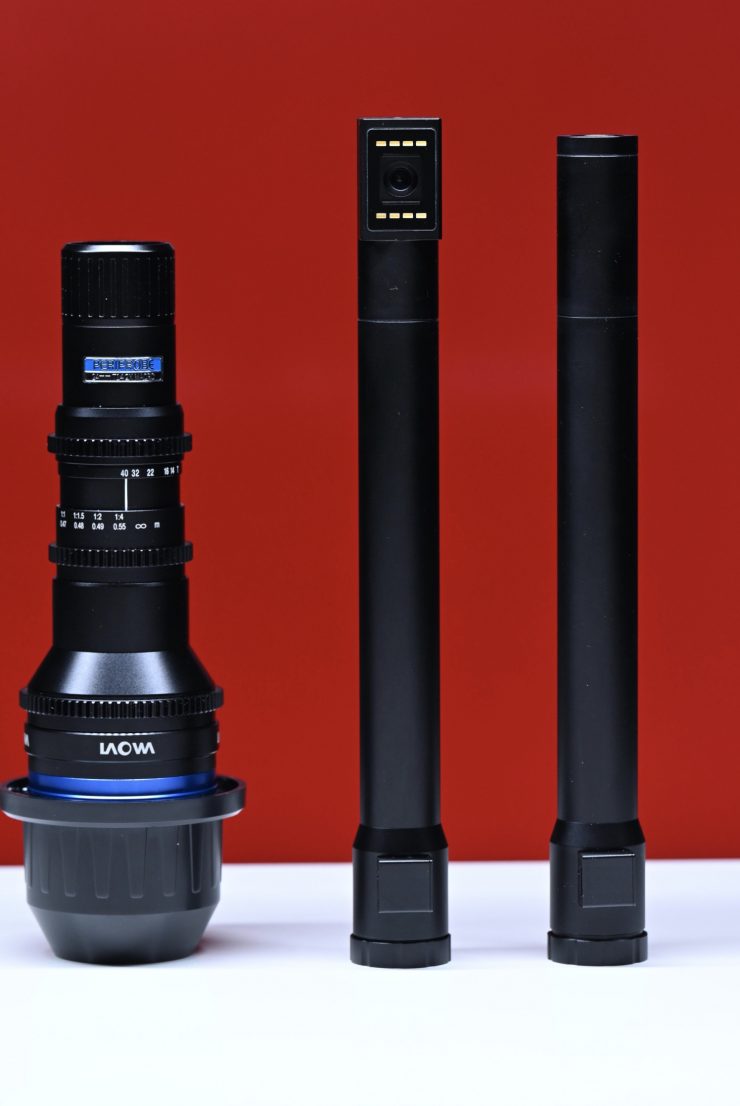
What makes the Laowa FF 24mm T14 2X Macro Periprobe even more unique and interesting than the 24mm f/14 2x Macro Probe is that it uses an interchangeable lens tube that allows you to shoot at 0° or 90°. This opens up a world of creative opportunities that weren’t possible with the previous lens.
Key features
- Bug-eye perspective
- 2x magnification
- Deep depth of field
- Long & tubular lens barrel
- Waterproof barrel
- LED Ring Lite
- 360° Rotation
- 0° & 90° interchangeable
- Extra threaded tip (1/4 20)
You have probably wondered on occasion how wildlife documentary shooters are able to get such incredibly close macro shots of small insects. Well, one of the ways to do it is through the use of a periscope or probe lens. Lenses such as the Innovision Probe 2+ and the T-Rex SuperScope are just two of the options available, but being specialty lenses they are expensive to buy or rent. Affordable options are far and few between, but that was before Laowa came along. Laowa has a good reputation for making unique and interesting lenses and the FF 24mm T14 2X Macro Periprobe follows that tradition.
The Laowa 24mm f/14 2x Macro Probe was the world’s first consumer-grade probe lens, and it allowed users to capture very creative shots. Above you can see some footage that I captured with that lens. Unlike conventional macro lenses, the Laowa 24mm Probe lens can create a perspective that cannot be replicated with a conventional macro lens. Not only could it focus really close (2cm @ 2:1), which is perfect for showing a great amount of detail and texture, but it is also capable of creating a compelling wide angle ‘Bug Eye’ view (84.1°). This allows you to get a macro wide-angle perspective that is very different from what you are used to seeing. For telephoto macro lenses, the subject will fill most of the frame and appear isolated from the surrounding environment instead.
Full Frame Coverage
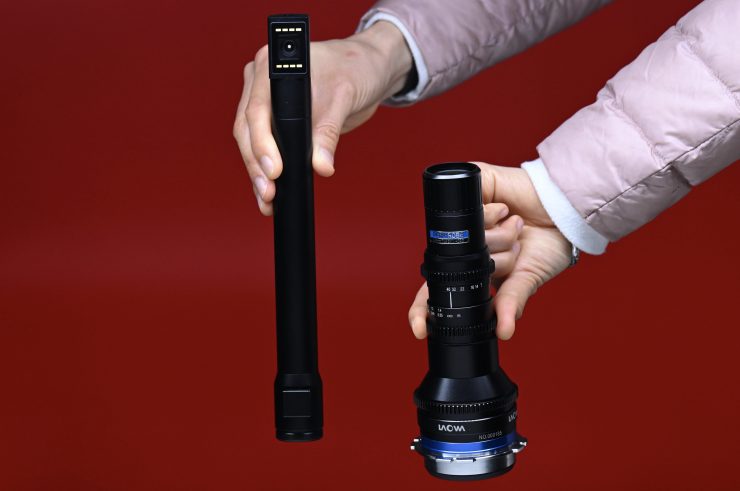
The Laowa FF 24mm T14 2X Macro Periprobe can cover both standard 35mm full frame and Super 35 image sensors. This makes the lens suitable for use on just about any camera. The lens is available in Canon EF, Canon R, Nikon F, Nikon Z, Sony E, and Leica L mounts. There is also cine version with a click-less aperture and focus gears in ARRI PL mount.
Build Quality
The build quality of the Laowa FF 24mm T14 2X Macro Periprobe is very good. It utilizes an all-metal construction and it feels solid in the hand.
The focus ring has a nice amount of resistance, however, I did find that the aperture ring was a little too loose for my own personal tastes. I found it quite easy to knock it accidentally as it doesn’t have a lot of resistance.
I like that Laowa includes nice lens caps for both tubes and protective coverings for the lenses.
Size & Weight
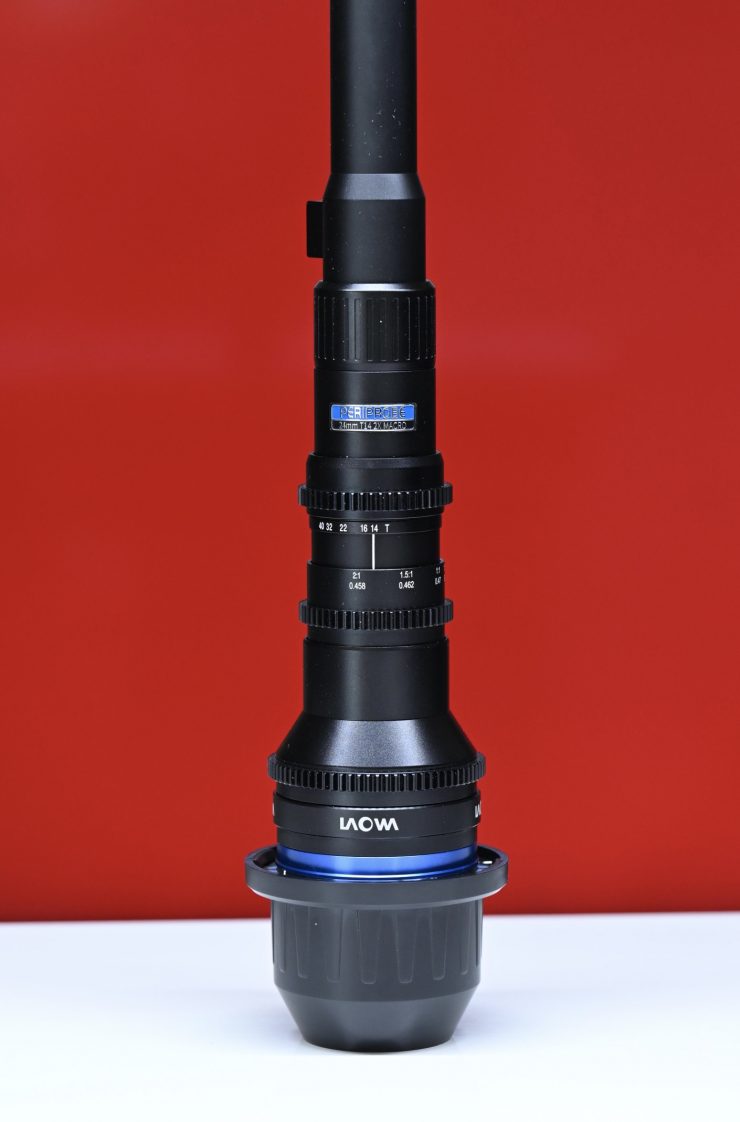
The lens tips the scales at 1.7lb / 770g. This makes it heavier than the 24mm f/14 2x Macro Probe. While 1.7lb isn’t that heavy, you do have to take into account that it’s a very long lens so on a smaller sized camera the weight balance can be tricky. The PL mount version I was testing measured in at 40.8cm / 16.06″ from the camera mount to the tip. That’s longer than a Canon EF 400mm f/2.8L IS II USM Lens (34.3 cm).
The lens does come in its own metal case and if you are going to put it into a bag with other lenses you will need to be mindful of its length.
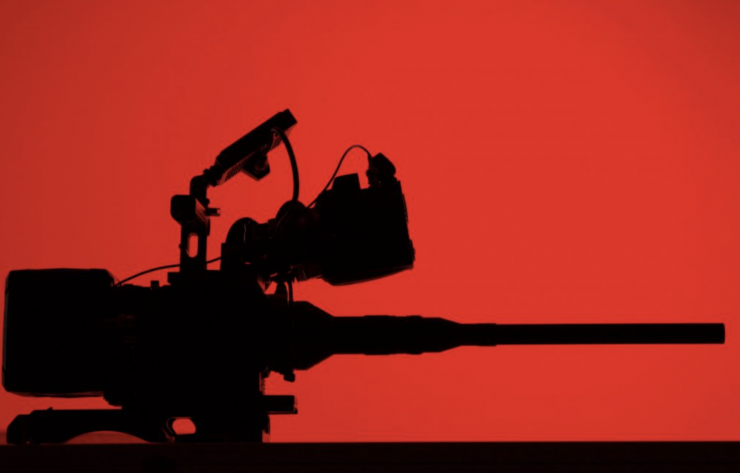
The long protruding barrel could potentially be a problem if you are using the lens in certain locations where it may well get mistaken for the barrel of a gun. This may be unlikely to happen but it is something you need to keep in the back of your mind.
90° Tube
Here is where things get very interesting. By utilizing the 90° tube instead of the 0° tube it makes shooting with the lens so much easier. Often with insects or small creatures, they are on the ground which makes it very hard to shoot because of the angle the lens needs to be on. To overcome this issue Laowa came up with the 90° tube. This allows you to virtually position the lens right on a flat surface because of the 90° angle.
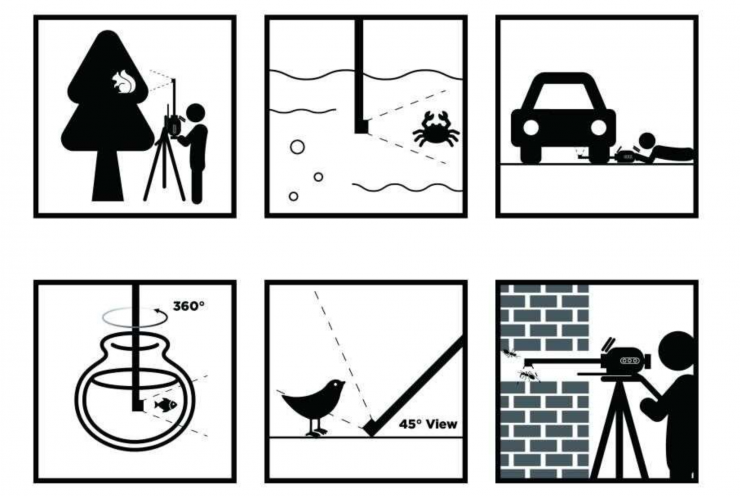
Having this type of flexibility allows you to get shots or put your camera and lens in positions that weren’t previously possible with the first probe lens.
The rear part of the lens has a 360° rotation mechanism. This allows you to place the lens in the exact position you need it to be. Above you can see how this works. The only slight issue I had was that when you go to lock the mechanism the actual lens will move a little until it clicks into place. This means that it isn’t always going to be in the correct place that you want it to be. To counteract this I found the best way was to just loosen where the lens barrel attaches and adjust the tube slightly.
If you don’t lock off the rotating mechanism you could hook up a lens motor and have the lens spin around 360°. This could be used to create some unique shots.
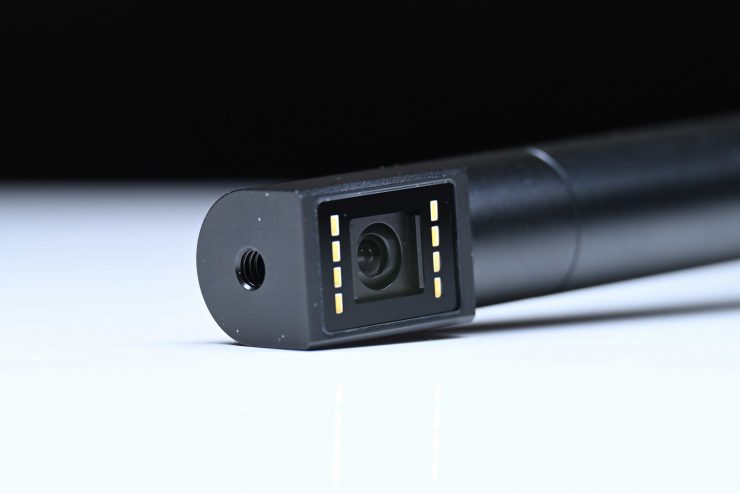
What is nice is that Laowa has placed a 1/4-20″ thread on the end of the barrel so you could attach your own light on a small arm if need be. While it is possible to do this, I wouldn’t recommend it as putting extra weight on the end of a long barrel makes the lens very hard to use and balance without additional shake.
0° Tube
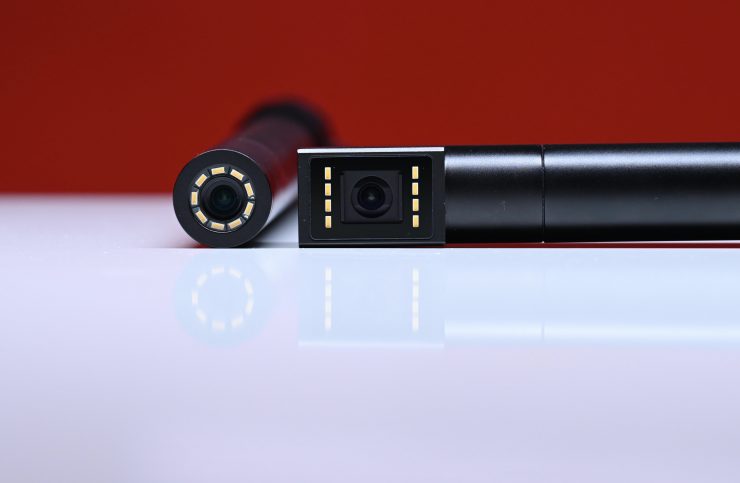
The 0° Tube is essentially the same as the one that was found on the original 24mm f/14 2x Macro Probe, however, Laowa has tweaked the optical design. Above you can see it next to the 90° tube.
Unlike the 90° Tube, the 0° Tube can be used for more traditional shots where you need to see straight ahead.
Optical Design
For the optical design, Laowa has divided the lens (28 elements in 19 groups) into 3 functional groups. These functional groups are: Macro lens + Relay Lens + Objective lens. That’s also one of the reasons why this lens is a bit more expensive than a normal lens as it’s basically three lenses merged into one.
Macro Lens – At the front of the lens to capture the image (2:1 macro)
Objective Lens – Near the camera sensor to expand the image to fit on the full frame sensor
Relay Lens – To relay the image from the macro lens to the objective lens along the long barrel without image quality loss
2:1 Magnification to Infinity Focus
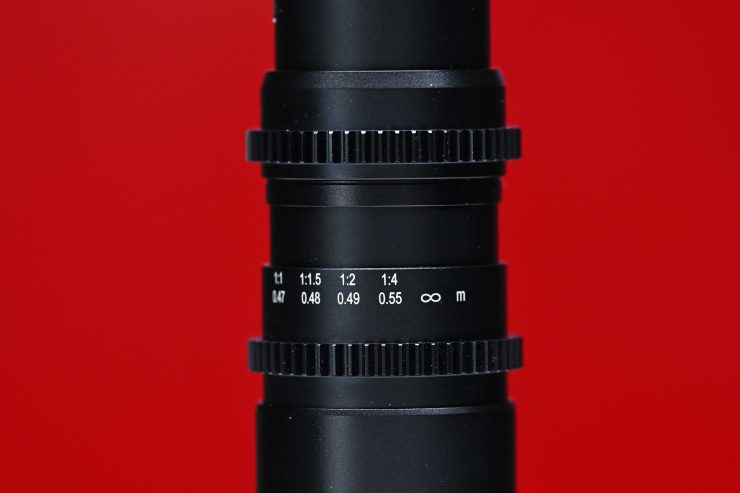
The lens has a focusing range from 2:1 macro magnification to infinity focus. With a 2:1 maximum magnification, you can shoot really small bugs/objects and reveal details that cannot be seen by the naked eye. The wide focusing range (from Macro to infinity) is useful for capturing both the finer details as well as the background all in one shot. This really does make it quite a unique lens, as you can actually use it as a normal 24mm wide-angle lens if you wanted to. I probably wouldn’t, but you could.
Deep Depth-of-Field
The challenge when using macro lenses has always been trying to follow tiny objects that you can barely see and keep in focus. This is very difficult to do when the error for getting sharp focus can be as little as a fraction of a millimeter. To overcome this, the Laowa FF 24mm T14 2X Macro Periprobe utilizes a wide-angle design so it can achieve a much greater depth of field at a close distance (compared to a telephoto macro lens). Being able to focus so closely while still having a deep depth of field is a huge advantage for both studio and wildlife shooting. Too often with extreme macro shots, all you can see is your subject and not the background.
This deep depth of field makes it way easier to capture macro images that are actually reasonably sharp and in focus.
A Waterproof Front Lens Barrel
Laowa has made the front barrel of the lens waterproof so it can be used to shoot in and out of the water. The waterproof design allows you to get shots in water and liquid, and it also has the added benefit of keeping fine powders and dust out of the lens.
Now, you can’t put the whole length of the lens in water. About halfway down the lens (21cm), there is the USB input for powering the small inbuilt LED ring light, so you can’t go past that point.
This is a nice option to have, however, macro shots in any type of liquid is a pretty niche use case.
40.8 cm Long Tubular Lens Barrel
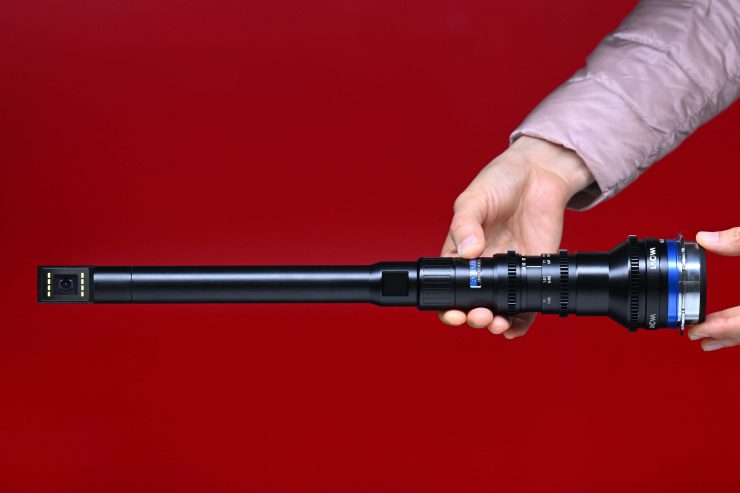
With a 40.8 cm (16.06″) long barrel, you can focus really close to the subject but still keep your camera away from the subject. The long lens barrel also allows shooters to keep a safe distance away from animals such as spiders when shooting. Being able to get the lens really close to your subject is great, but you do have to take into account what you are shooting. Trying to get the lens close to insects that fly isn’t that easy as they are likely to fly off before your lens even gets near them. For slow-moving insects, it’s great.
Tiny 2cm Lens Tip
The tiny 2cm diameter on the standard lens tube allows you to capture unique perspectives. With such a small diameter you can insert the lens into tiny crevices, inside a glass bottle, or places where a normal lens just can’t go. The smaller lens tip also makes it easier for lighting. A typical macro lens with a larger lens barrel blocks more light, but a small lens barrel allows you to get light a lot closer to your subject. This is important because the Laowa lens has a max aperture of T/14 so you are going to need all the light you can get. According to Laowa, they would rather use external lighting to compensate for the exposure, than make a lens with a bigger front tip. There are some probe lenses on the market which have a higher effective max. aperture but they feature a much larger lens tip which limits their usage.
LED Ring Light
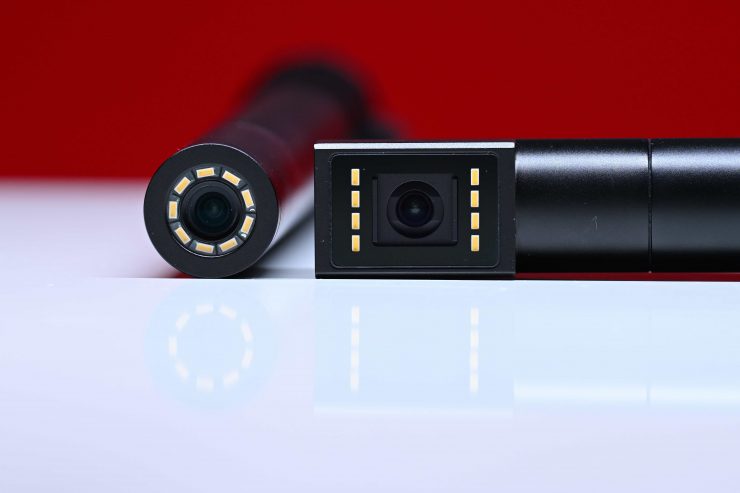
Just like with the original Probe Lens, Laowa has also built-in a LED ring light at the tip of both the 0° and 90° tubes. These are powered through a USB-C slot on the barrel. In somewhat of a strange move these lights are tungsten and not daylight. This is not ideal if you are using the light outdoors in daylight conditions. I measured the lights output and Kelvin color temperature with a Sekonic C-800. Why bother doing this? The ring light is a key feature of this lens and you are probably going to use it quite frequently, therefore, you should know how it performs. Below you can see the results.
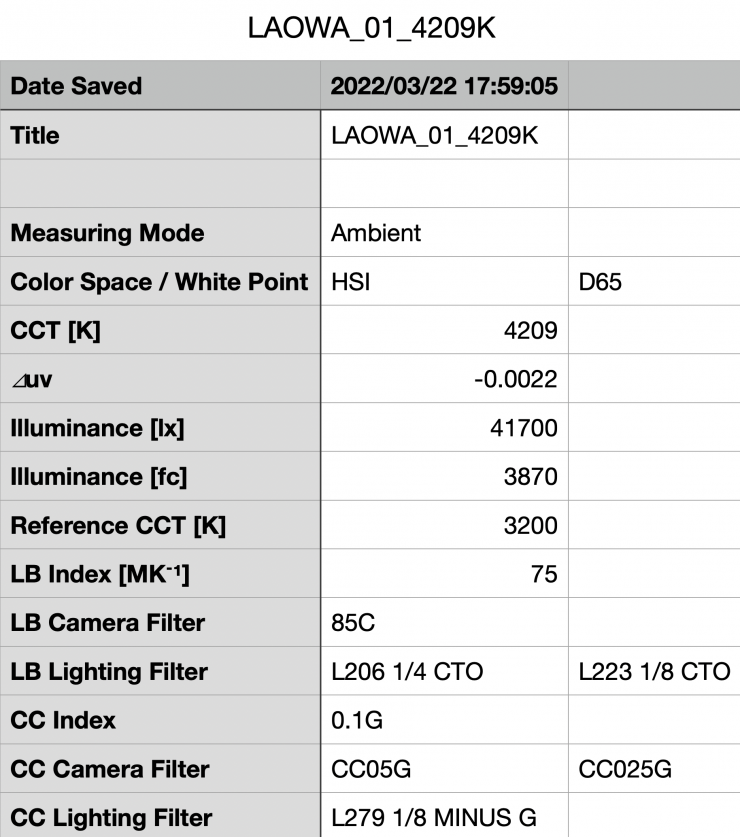
As you can see the LED light on the 90° tube lens recorded a Kelvin color temperature of 4209K. At a distance of 2cm, the output of the light was 41,700lx (3870fc).
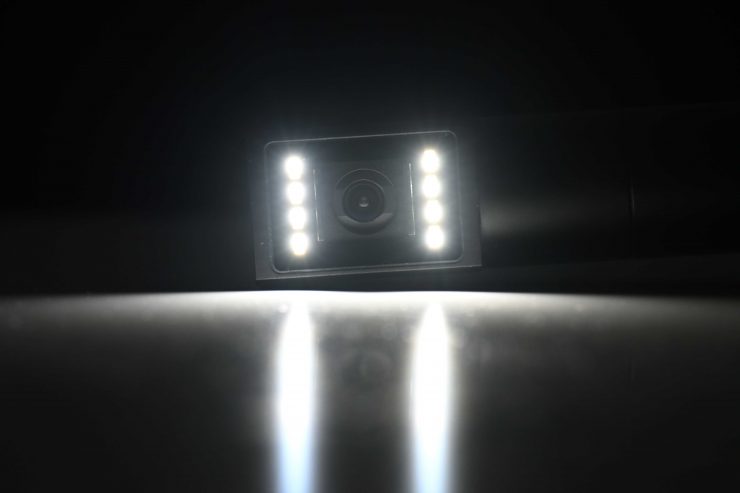
Herein lies the problem, even though the lenses aperture can be set between T/14 and T/40, if you are using the lens to shoot very close objects with the built-in light it is still incredibly bright. In somewhat of a surprise, I found a lot of small insects seemed to get hypnotized by the lights and I was able to get the lens very, very close to my subject.
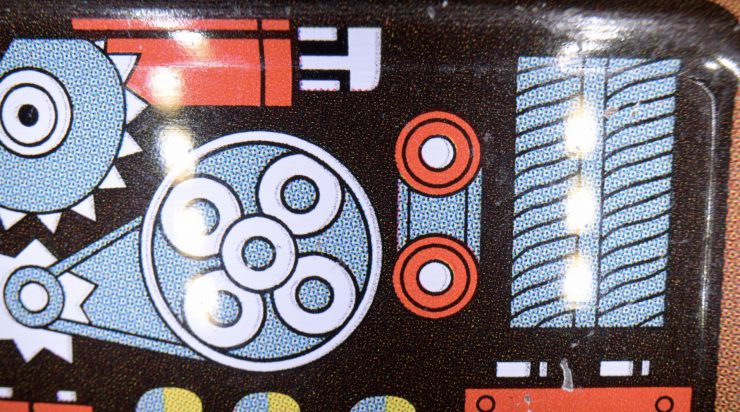
This becomes very evident if you are shooting anything with a reflective surface as you get these big light reflections in your images. You need to be very aware of this if you plan on using the in-built lights.
Laowa does give you a USB-C cable with a dimmer.
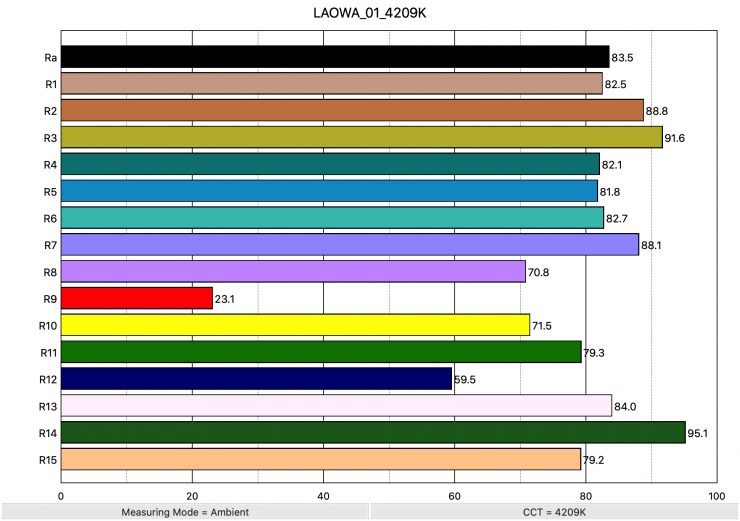
As far as accurate color rendition is concerned, above are the results for the LED light. The LED light might just be an extra addition to the lens, but the quality of that light should at least be up to the job. The in-built ring light recorded an extended CRI (R1-R15) of 77.34. In 2022 this is a pretty horrible score for any LED light, let alone one that you are probably going to use quite often with this lens. I would have thought that Laowa would have changed the LED lights to daylight or improved the color accuracy.
You Need A Lot Of Light
You need a lot of light to use this lens. With a maximum aperture of T/14, even outdoors you will need some sort of extra light unless you are using the lens in sunny conditions. I tried using the lens outdoors on a sunny day in the shade and even at T/14 you couldn’t get enough light at an ISO of 800. You really need to think carefully about how much light you will need when using this light and plan accordingly.
If you are going to shoot anything at higher frame rates then you will need a lot of extra light to obtain the correct exposure.
Unique Shots
I found that I could use the Laowa FF 24mm T14 2X Macro Periprobe lens to get some very interesting shots that are not usually possible. Some of the most interesting shots I got were when using the lens on a small motorized slider and then tracking across or back over objects. Because you are shooting at such close magnifications a move on a small slider feels like it is going on forever. For shooting small objects or documents you can create some very interesting camera moves using this combination.
I did, however, find that because the barrel is so long and lightweight it was susceptible to bouncing around and moving which you can see in some of the example shots I did. At really close magnification it is very hard to shoot tiny insects if they are on a branch or a leave and there is even the slightest amount of wind. The movement gets amplified so much that it looks like you are wildly moving the camera all over the place.
Bokeh
This is not a lens for creating gorgeous bokeh. The bokeh and out-of-focus areas when using this lens take on a very muddy and not very pleasing form. If you are expecting nice bokeh when using this lens you will be disappointed.
Image Quality
The Laowa FF 24mm T14 2X Macro Periprobe might have a lot of bells and whistles, but that won’t mean anything if it can’t produce good-quality images. Above you can see some sharpness tests with the lens.
Usually, if you shoot with lenses at high T stops you risk degrading the sharpness of your images, but due to such a complex optical design, the Laowa FF 24mm T14 2X Macro Periprobe actually performs very well. When you are shooting extreme macro shots, things are not always going to appear sharp because you are looking at incredibly small details. There is a difference between actual sharpness and perceived sharpness. The lens was sharper than I was expecting, especially when shooting at higher resolutions. I didn’t see any real noticeable difference in image quality when comparing both the 90° and 0° lens tubes.
The lens certainly performs a lot better when shooting extreme macro shots than it does when used at infinity. If you use the lens as a regular wide-angle at infinity it is not very sharp and there is quite a lot of barrel distortion.
Above you can see some shots where I was just messing around shooting some banknotes on a table. I had the lens on a Nikon Z9 and an iFootage Shark Slider Nano.
Optically its all-round performance isn’t going to rival a good macro lens because of the design challenges that Laowa faced when making a lens like this. The lens does show signs of barrel distortion when using it for wide-angle shots and it’s not that sharp out towards the edges of the frame. I shot material with the lens in 4K, 5K, 6K, and 8K, and it held up very well. If you shoot in 5K/6K/8K and nail the focus you can crop in quite significantly on an image and get some amazingly close ultra macro shots.
The lens doesn’t have much contrast and it is very susceptible to flare. This is something you need to be mindful of.
Color Fringing
The lens does exhibit some color fringing. I found that in certain lighting conditions I got color fringing around objects. While it isn’t that pronounced or too distracting, it is still there and you need to be aware of it.
Dust, Water, Hair, etc.
With such a close focusing wide-angle macro lens with a T/14 aperture, any small bit of dust, hair, or water can show up on your footage. I had some shots ruined because specs of fine dust were on the front of the lens. You really do need to keep the front of this lens as well as your sensor absolutely spotless to avoid this from happening.
Using the lens outside is tricky. When you are getting very close to insects or animals or pushing the lens through grass, leaves, or plants it is so easy to get tiny marks on the front of the lens. You really need to keep this in mind at all times when you are shooting.
You Need A Tripod
This is not a lens you want to use handheld for video unless you are running very high frame rates. At super close magnifications, the slightest bit of movement gets magnified as well, so you end up with unusable footage. You really need to use this lens on a good tripod or have your camera placed on the ground. In saying that, if you have a camera that has very good IBIS, you could potentially get a shot without a tripod.
As the barrel of the lens is so long and relatively light it is prone to moving around, especially if there is any sort of wind. I wish Laowa had provided, or at least made, some sort of lens support that could attach further down the barrel of the lens. This would help alleviate some of the flex you get when using it.
Speaking of lens support, Nitze just announced that they are working on an option for the Periprobe.
Price & Availability
The lens is expected to retail for $2,299 USD. This makes it more expensive than the current 24mm T14 2X Macro Probe which costs between $1,599 and $1,799 USD depending on the mount choice.
Conclusion
Just like the original Probe Lens, the Laowa Laowa FF 24mm T14 2X Macro Periprobe is definitely a specialty lens, but at $2,299 USD it’s not going to break the bank. If you do a lot of extreme macro shooting or like to capture wildlife, the lens is a great alternative to more expensive offerings. It’s certainly a niche lens but you should really think hard about whether you actually need it, or just want it.
It’s not the easiest lens to use, but it certainly is fun and you can get some really unique shots that aren’t possible with other lenses. Optically it is not going to be as good as most other lenses you own, but I’m willing to give Laowa a hall pass on this one because of what the lens can do, rather than what it can’t. At the end of the day, it’s just a really unique and interesting lens that allows you to capture shots that are just not usually possible. The addition of the two interchangeable lens barrels is a great touch and it really increases the flexibility and abilities of the lens.
